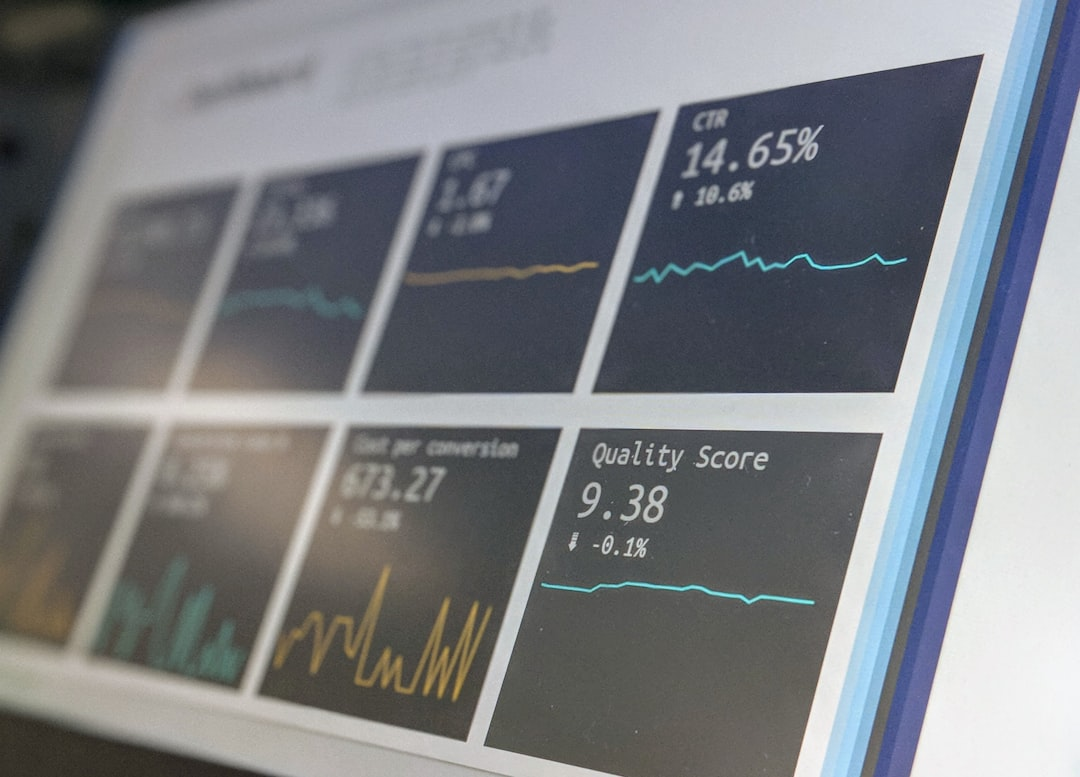
Photo by Stephen Dawson on Unsplash
In the realm of public health, data has become a pivotal tool for understanding and combating diseases. This blog will guide you through the evolution and utilization of Electronic Health Records (EHRs) and how public data sources can enhance our understanding of health trends and disease outbreaks.
Step 1: Understanding the Historical Context of Disease Data
To truly appreciate the role of data in public health, we must first explore its historical context. From ancient civilizations to modern times, societies have relied on various forms of data to understand health trends and disease outbreaks.
In the early days, data collection was rudimentary, often reliant on anecdotal evidence. However, as the need for systematic understanding grew, so did the methods of data gathering. The establishment of vital statistics in the 19th century marked a significant turning point, allowing for the tracking of births, deaths, and causes of death.
One of the pivotal moments in this evolution was John Snow’s investigation of the cholera outbreak in London in 1854. By mapping cases and identifying a contaminated water source, he laid the groundwork for modern epidemiology, illustrating the power of data in public health.

Photo by Stephen Dawson on Unsplash
Step 2: The Significance of John Snow’s Discovery
John Snow’s work during the cholera epidemic is a landmark case in the field of public health. His meticulous mapping of cholera cases revealed a distinct pattern, leading him to the Broad Street pump as the outbreak’s source.
This discovery was revolutionary. It was one of the first instances where data was used to understand and control a disease outbreak. Snow’s approach emphasized the importance of geographic information in health data analysis and demonstrated how targeted interventions could save lives.
Furthermore, Snow’s methodology underscored the need for accurate data collection and analysis in public health. His legacy continues to influence public health strategies and data-driven decision-making today.

Photo by Nick Fewings on Unsplash
Step 3: Introduction to Electronic Health Records (EHRs)
Electronic Health Records (EHRs) represent a significant advancement in the collection and management of health data. EHRs are digital versions of patients’ paper charts and are designed to streamline the workflow in healthcare settings.
These records provide a comprehensive view of a patient’s health history, including diagnoses, medications, treatment plans, and test results. With EHRs, healthcare providers can access real-time, patient-centered data, facilitating better coordination of care.
The transition from paper to electronic records has transformed how health information is stored and shared, paving the way for improved patient outcomes and enhanced research capabilities.

Photo by Brooke Lark on Unsplash
Step 4: The Evolution of EHRs in Healthcare
The evolution of EHRs has been marked by technological advancements and regulatory changes. Initially, EHRs were simple digital records, but they have since evolved into sophisticated systems that integrate various functionalities.
In the 1960s, the first EHRs were introduced at facilities like the Mayo Clinic. Over the decades, their adoption grew, driven by the need for better data management and patient care. By the early 2000s, the U.S. government recognized the importance of EHRs and initiated programs to encourage widespread adoption.
Government incentives, such as those introduced through the American Recovery and Reinvestment Act, played a crucial role in accelerating EHR implementation across healthcare organizations. Today, EHRs are essential tools in managing patient data, improving clinical workflows, and enhancing research capabilities.

Photo by jesse orrico on Unsplash
Step 5: Government Initiatives for EHR Adoption
Government initiatives have been pivotal in promoting EHR adoption. In 2004, the establishment of the Office of the National Coordinator for Health Information Technology aimed to create a framework for the nationwide implementation of EHRs.
By setting clear goals for EHR adoption, the government incentivized healthcare providers to transition from paper records to electronic systems. The meaningful use program, introduced in 2009, further motivated providers by linking EHR usage to Medicare and Medicaid reimbursements.
These initiatives not only fostered the adoption of EHRs but also encouraged the development of standardized data formats, enhancing interoperability among different healthcare systems. This interconnectedness is vital for public health surveillance and research.

Photo by Christin Hume on Unsplash
Step 6: The Role of the American Recovery and Reinvestment Act
The American Recovery and Reinvestment Act (ARRA) of 2009 played a transformative role in the adoption of Electronic Health Records (EHRs) across the United States. By providing substantial financial incentives, the ARRA encouraged healthcare providers to switch from paper records to EHR systems.
This act included provisions for the meaningful use of EHRs, establishing benchmarks that healthcare providers needed to meet in order to qualify for incentive payments. The emphasis on meaningful use not only accelerated EHR adoption but also ensured that these systems were used effectively to improve patient care.

Photo by Alexander Grey on Unsplash
Step 7: Research Opportunities with EHRs
EHRs present a wealth of research opportunities that can significantly impact public health. With vast amounts of data collected from diverse populations, researchers can analyze trends, identify risk factors, and evaluate treatment outcomes with unprecedented precision.
For instance, researchers can utilize EHR data to study the effectiveness of various interventions, track disease outbreaks, and monitor the long-term effects of medications. The ability to analyze this data in real time opens doors to faster public health responses and more informed decision-making.
- Data Mining: Researchers can apply advanced data mining techniques to uncover hidden patterns within EHRs.
- Comparative Effectiveness Research: EHRs allow for the comparison of different treatment approaches and their outcomes.
- Population Health Management: EHRs facilitate the study of health trends across different demographics, aiding in targeted interventions.

Photo by Austin Chan on Unsplash
Step 8: Understanding HIPAA Regulations
The Health Insurance Portability and Accountability Act (HIPAA) sets stringent regulations on the use and sharing of medical data, ensuring patient privacy and security. Compliance with HIPAA is crucial for researchers utilizing EHRs, as it dictates how personal health information can be handled.
HIPAA regulations require that any research involving EHRs must have patient data anonymized to protect individual identities. This means that while researchers can access large datasets, they must ensure that any identifying information is removed or encrypted.
- Patient Consent: In many cases, researchers must obtain consent from patients before using their data.
- Data Security: Institutions must implement robust security measures to protect sensitive health information.
- Compliance Audits: Regular audits ensure adherence to HIPAA regulations and safeguard patient data.

Photo by Ryan Brooklyn on Unsplash
Step 9: Creative Approaches to Health Data Collection
Innovative methods for health data collection are emerging, driven by technology and social trends. Researchers are exploring various non-traditional data sources to complement EHRs and enhance public health insights.
For example, social media platforms can provide real-time data on health trends based on user posts and interactions. By analyzing these interactions, researchers can gauge public sentiment and awareness regarding health issues.
- Mobile Health Apps: These tools enable users to track their health metrics, which can be aggregated for research purposes.
- Crowdsourcing Data: Engaging the public in reporting health-related information can enrich datasets.
- Wearable Technology: Devices like fitness trackers can provide continuous health data, offering insights into population health trends.

Photo by Edu Lauton on Unsplash
Step 10: Utilizing Search Engine Data for Health Insights
Search engine data has emerged as a valuable resource for understanding public health trends. By analyzing search queries related to health symptoms and conditions, researchers can gain insights into emerging health issues and public awareness.
For instance, search patterns can indicate spikes in flu-related inquiries, potentially predicting outbreaks before they are formally reported. This unprompted data allows for a more organic understanding of public health concerns.
- Google Trends: This tool enables researchers to track the frequency of specific health-related searches over time.
- Social Media Analysis: Platforms like Twitter provide insights into public discourse around health topics.
- Real-Time Monitoring: Search engine data can facilitate near real-time tracking of health threats, improving response times.

Photo by Luke Chesser on Unsplash
Step 11: The Case Study of Google Flu Trends
Google Flu Trends was a groundbreaking initiative that attempted to harness search data to predict flu outbreaks. Launched in 2008, it aimed to analyze the frequency of flu-related search queries to forecast the spread of the virus.
Initially, the project showed great promise. Researchers found that the data from Google searches could provide earlier indicators of flu activity compared to traditional reporting methods. This real-time data analysis allowed for quicker public health responses, a crucial factor during the H1N1 pandemic.
However, as time progressed, discrepancies began to emerge between Google’s predictions and actual flu cases. The model’s accuracy waned, leading to its discontinuation in 2015. Despite its challenges, Google Flu Trends highlighted the potential of using non-traditional data sources for public health surveillance.

Photo by Kelly Sikkema on Unsplash
Step 12: Expanding Beyond Influenza: Other Disease Models
The approach pioneered by Google Flu Trends has inspired various adaptations for other diseases. Researchers have explored using search data to track conditions such as Ebola, Zika, and even chronic diseases like diabetes.
For instance, during the Ebola outbreak, data from search engines and social media platforms was utilized to monitor public sentiment and awareness. This helped track the spread and response efforts at a community level.
Similarly, for COVID-19, various organizations have employed similar methodologies, analyzing search patterns and social media trends to understand the pandemic’s dynamics. This broader application of search data has proven valuable in public health initiatives.

Photo by engin akyurt on Unsplash
Step 13: The Importance of Combining Data Sources
Combining multiple data sources is essential for enhancing the accuracy and effectiveness of health models. While search data provides real-time insights, integrating it with traditional health data from EHRs creates a comprehensive view of public health.
By blending data from EHRs, social media, and search engines, researchers can develop more robust predictive models. This approach leverages the strengths of each data source, improving the overall reliability of health forecasts.
- Enhanced Accuracy: Combining data reduces the risk of false predictions and increases the reliability of health trends.
- Broader Insights: Diverse data sources provide a more comprehensive understanding of public health dynamics.
- Informed Decision-Making: Public health officials can make better-informed decisions based on a holistic view of the data.

Photo by Campaign Creators on Unsplash
Step 14: The Role of Research Journals in Data Science
Research journals play a critical role in advancing the field of data science in public health. Journals such as the Philosophical Transactions of the Royal Society publish cutting-edge research that explores innovative methodologies and applications of data science.
These publications provide a platform for researchers to share findings, methodologies, and best practices. By disseminating knowledge, they contribute to the collective understanding of how data science can be applied to public health challenges.
Moreover, research journals foster collaboration among scientists, epidemiologists, and data analysts, leading to the development of more effective public health strategies.
FAQ: Common Questions About EHRs and Data Utilization
What are EHRs?
Electronic Health Records (EHRs) are digital versions of patients’ paper charts, designed to streamline the storage and sharing of health information across healthcare providers.
How do EHRs improve patient care?
EHRs provide real-time access to patient data, allowing healthcare providers to make informed decisions, coordinate care more effectively, and enhance patient outcomes.
What regulations govern the use of EHR data?
The Health Insurance Portability and Accountability Act (HIPAA) sets strict guidelines on the use and sharing of medical data, ensuring patient privacy and data security.
Can search engine data be used for health research?
Yes, search engine data can provide valuable insights into public health trends and behaviors, allowing researchers to analyze patterns and predict outbreaks.
What are the challenges of using non-traditional data sources?
While non-traditional data sources offer valuable insights, challenges include ensuring data accuracy, addressing privacy concerns, and integrating with existing health data systems.

Photo by Miquel Parera on Unsplash


